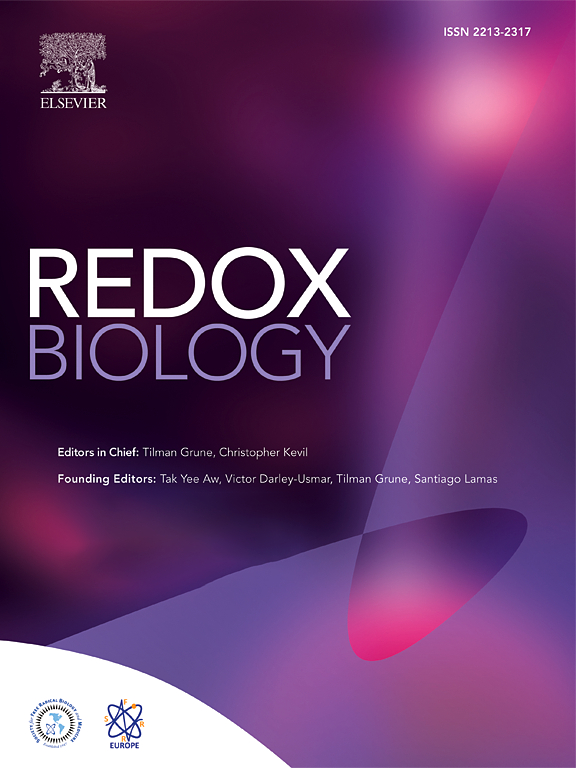Activation of sclerostin inhibits Isg20-Mediated aerobic glycolysis ameliorating renal Fibrosis: the renoprotective mechanism of hederagenin in CKD
IF 10.7
1区 生物学
Q1 BIOCHEMISTRY & MOLECULAR BIOLOGY
引用次数: 0
Abstract
Sclerostin (Sost) functions as an inhibitor of the Wnt/β-catenin signaling pathway, which is known to promote kidney cell epithelial-to-mesenchymal transition (EMT), and fibrosis in chronic kidney disease (CKD). However, the renoprotective effects of Sost in kidney diseases and its therapeutic potential as a target remain unknown. To clarify the protective role of Sost in CKD kidneys, we utilized ultrasound microbubble-mediated renal in situ gene transfection to overexpress and knockdown Sost in kidney. Subsequently, we employed the TurboID-based protein interaction technique to screen for Sost-binding proteins and combined it with ECAR/OCR to elucidate the regulation of glycolytic pathways by Sost and its binding proteins. Sost is predominantly expressed in renal tubules and that its expression is significantly diminished in renal tissues of CKD patients, as well as in UUO and folic acid (FA) induced CKD mouse. Overexpression of Sost in vivo and in vitro ameliorated tubular injury and fibrosis. Employing the TurboID technique, we uncovered an interaction between Sost and the potential glycolysis-associated protein Isg20, an interferon-stimulated ribonuclease. This binding interaction serves to inhibit Isg20-mediated aerobic glycolysis and subsequent fibrosis within the kidney of CKD. For Sost agonists screening, we found that HDG exerts salient anti-fibrotic and renal protective effects in CKD, which are likely attributable to its significant upregulation of Sost expression, thereby inhibiting Isg20-mediated glycolysis. In summary, we demonstrate that upregulation of Sost by HDG inhibits glycolysis and renal fibrosis in CKD through binding and suppressing of Isg20, and targeting Sost may develop novel approaches to treat CKD.

活化硬化蛋白抑制isg20介导的有氧糖酵解改善肾纤维化:hederagenin在CKD中的肾保护机制
硬化蛋白(Sost)是Wnt/β-catenin信号通路的抑制剂,已知Wnt/β-catenin信号通路可促进肾细胞上皮-间质转化(EMT)和慢性肾脏疾病(CKD)的纤维化。然而,Sost在肾脏疾病中的肾保护作用及其作为靶点的治疗潜力尚不清楚。为了明确Sost在CKD肾脏中的保护作用,我们利用超声微泡介导的肾原位基因转染在肾脏中过表达和敲低Sost。随后,我们利用基于turboid的蛋白相互作用技术筛选Sost结合蛋白,并结合ECAR/OCR阐明Sost及其结合蛋白对糖酵解途径的调控作用。Sost主要在肾小管中表达,在CKD患者肾组织以及UUO和叶酸(FA)诱导的CKD小鼠中表达显著降低。体内和体外过表达Sost可改善小管损伤和纤维化。利用TurboID技术,我们发现了Sost与潜在的糖酵解相关蛋白is20(一种干扰素刺激的核糖核酸酶)之间的相互作用。这种结合相互作用有助于抑制isg20介导的有氧糖酵解和CKD肾脏内随后的纤维化。对于Sost激动剂筛选,我们发现HDG在CKD中具有显著的抗纤维化和肾脏保护作用,这可能是由于其显著上调Sost表达,从而抑制isg20介导的糖酵解。总之,我们证明了HDG上调Sost通过结合和抑制is20抑制CKD中的糖酵解和肾纤维化,并且靶向Sost可能开发治疗CKD的新方法。
本文章由计算机程序翻译,如有差异,请以英文原文为准。
求助全文
约1分钟内获得全文
求助全文
来源期刊

Redox Biology
BIOCHEMISTRY & MOLECULAR BIOLOGY-
CiteScore
19.90
自引率
3.50%
发文量
318
审稿时长
25 days
期刊介绍:
Redox Biology is the official journal of the Society for Redox Biology and Medicine and the Society for Free Radical Research-Europe. It is also affiliated with the International Society for Free Radical Research (SFRRI). This journal serves as a platform for publishing pioneering research, innovative methods, and comprehensive review articles in the field of redox biology, encompassing both health and disease.
Redox Biology welcomes various forms of contributions, including research articles (short or full communications), methods, mini-reviews, and commentaries. Through its diverse range of published content, Redox Biology aims to foster advancements and insights in the understanding of redox biology and its implications.
 求助内容:
求助内容: 应助结果提醒方式:
应助结果提醒方式:


